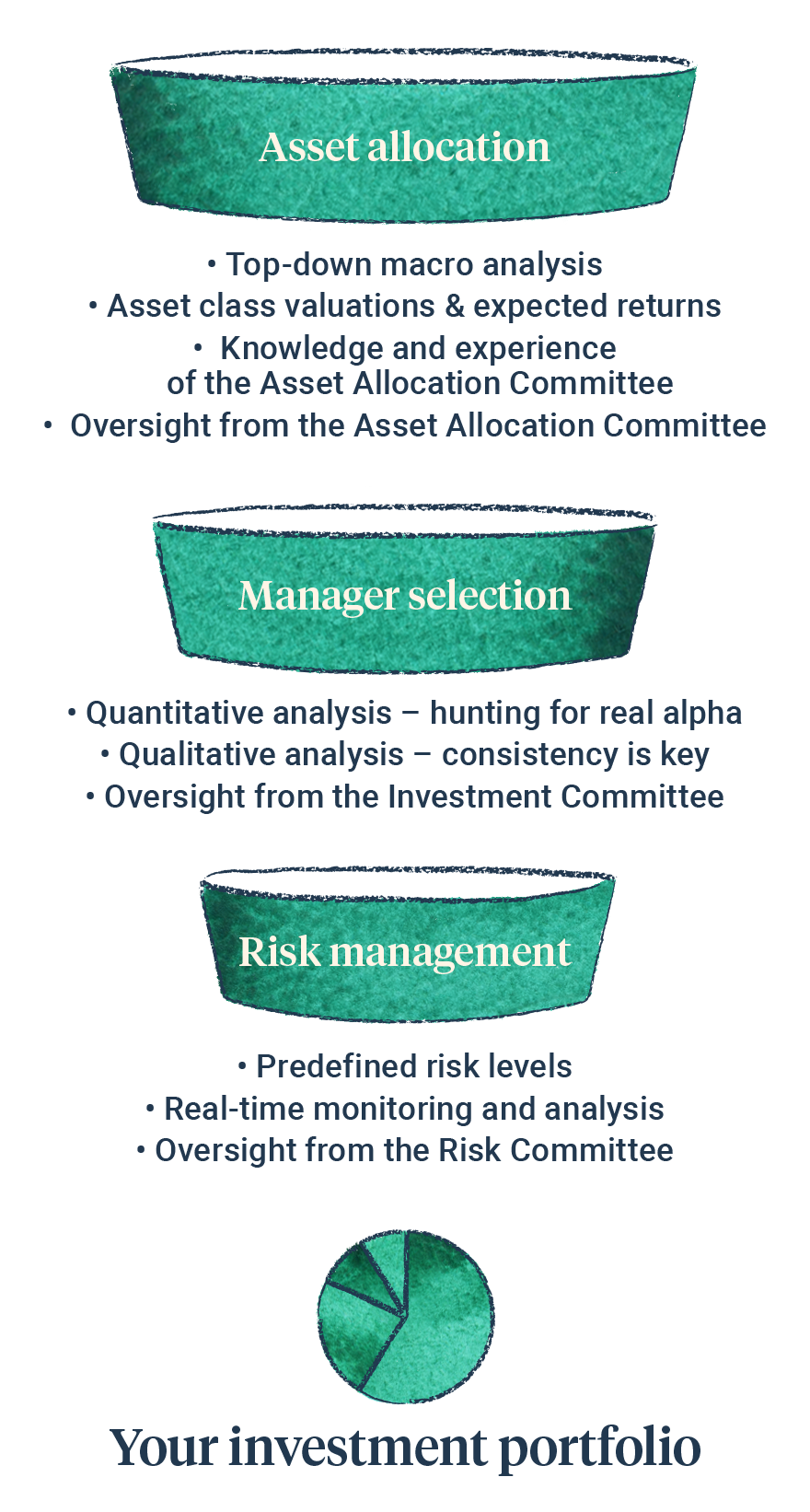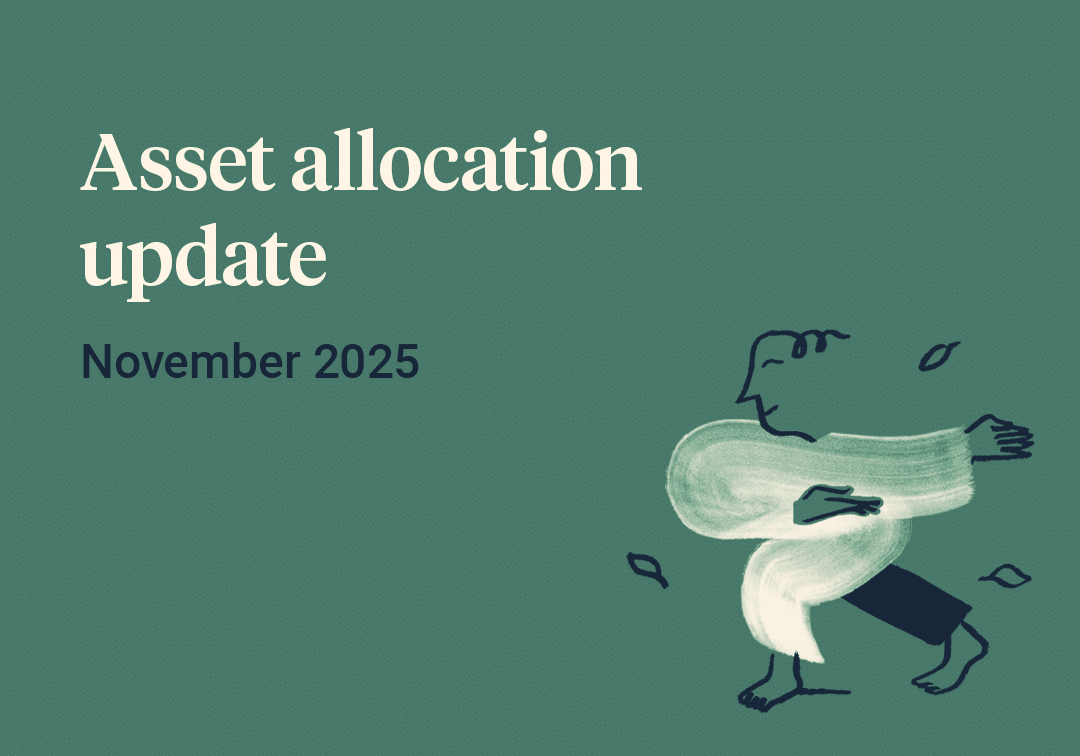Asset Allocation
Asset allocation decisions are shaped by our Asset Allocation Committee using several key inputs:
- Asset class valuations and expected returns
-
Fundamental macro-economic analysis
-
Technical and quantitative analysis
-
Knowledge and experience of the asset allocation committee
These inputs are considered by the committee over a wide range of different time horizons. Reference is made to consensus opinion as part of the thought process, but it is not a constraint on any decision.







